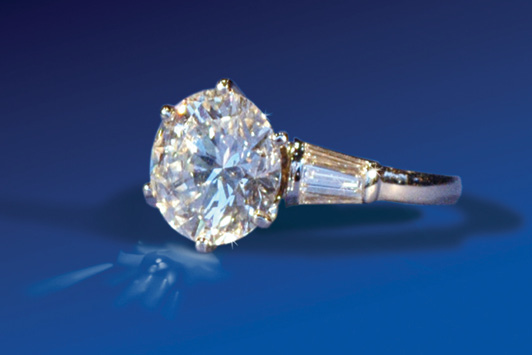
“Inclusions
are just one part of the much bigger story of selling a diamond,” says Erik
Runyan, owner of Erik Runyan Jewelers in Vancouver, Washington. “My experience
shows that people aren’t afraid of inclusions, but rather, their concern is how
they affect the beauty of the diamond. As jewelers, we have to convey that inclusions are natural
phenomena occurring in the creation of these unique and rare stones.”
Runyan notes that the diamond-purchasing public is becoming more
knowledgeable. “In the past, customers had some idea of the 4Cs, but now they
are familiar with the entire GIA grading scale. It is amazing that customers
will ask for SI1 — except they don’t know what that means in real life. And
that is why it is critical that the selling conversation transitions from
looking at diamonds on paper to seeing and holding them in person,” he advises.
He prefers to sit down with the customer and let her select the
diamond that she finds the most beautiful — without considering specific
criteria such as clarity or color.
“After
the emotional connection is made is when I start talking about the quality
characteristics that drew her to that diamond,” he says.
Runyan also talks about the origins of the diamond, emphasizing
the “incredible journey” each of these rare stones has made over billions of
years.
Only a handful of his customers have specifically requested
synthetic diamonds, produced either through High Pressure-High Temperature
(HPHT) or chemical vapor deposition (CVD) methods. And even in those cases, he
says, “my impression is that these customers are not looking for a stone
without any imperfections. They are interested in synthetic diamonds because of
their low-carbon-footprint and/or no-conflict associations.”
While synthetic diamonds exhibit the same chemical, physical and
optical properties as natural diamonds, there is an important element that
cannot be replicated in a laboratory.
“There are two reasons people buy a diamond,” he says. “The
first is that diamonds are simply beautiful. And secondly, they are rare. It is
unusual for someone to own something so unique that comes from the earth. A
diamond is given as a symbol of love. But a lab-grown diamond does not evoke
any romance at all.”
Image: Erik Runyan JewelersArticle from the Rapaport Magazine - Special Supplement Ancient Beauty, Bold Future. To subscribe click here.